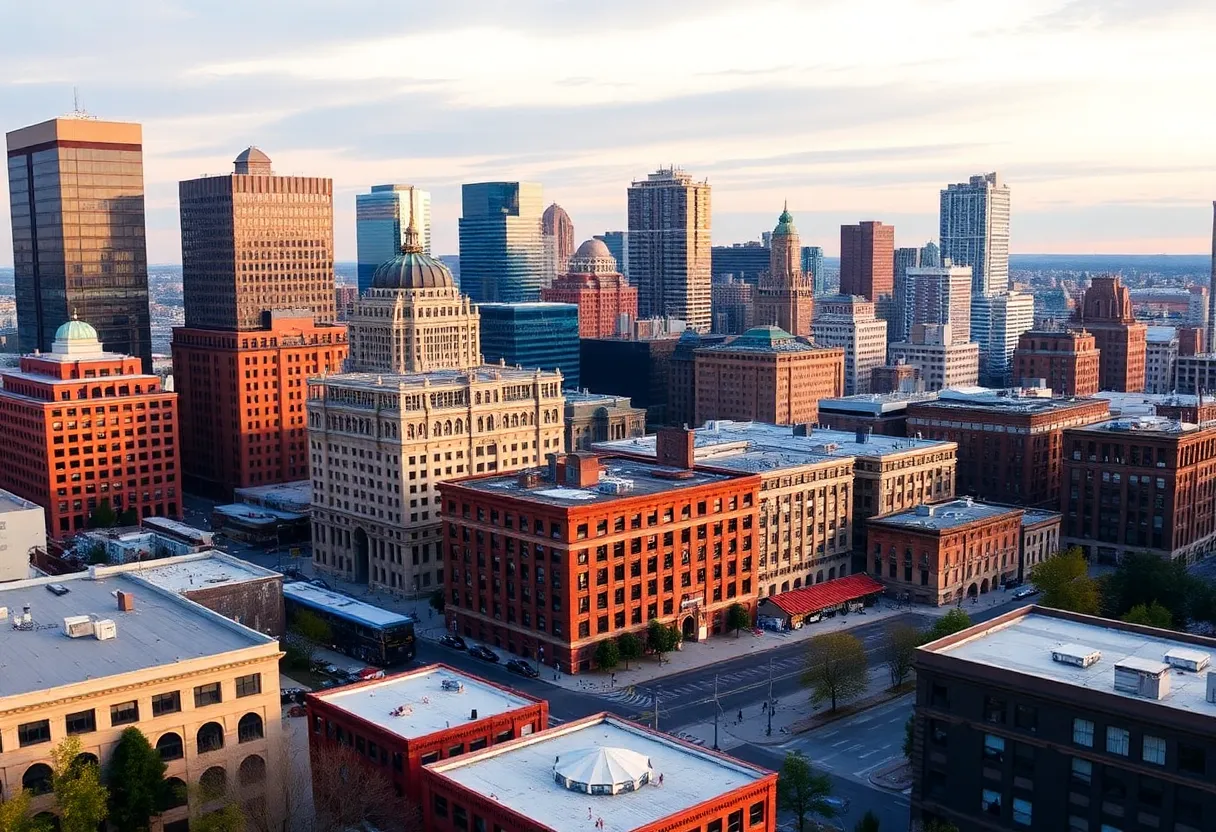Buffalo, October 6, 2025
Developer Douglas Jemal’s downtown project in Buffalo is under increased scrutiny from city officials due to permitting delays. Initially supported for revitalizing historic sites, his recent proposal for mixed-use spaces has raised concerns over zoning compliance and environmental impacts. Jemal expresses frustration over bureaucratic obstacles while remaining committed to the project’s potential economic benefits. As the city’s priorities shift towards sustainable growth, the outcome of this scrutiny could influence future developments in Buffalo.
Buffalo, NY: Developer Douglas Jemal Faces Scrutiny on Downtown Project Amid Permit Delays
Buffalo city officials are now closely examining Developer Douglas Jemal‘s latest downtown proposal, marking a shift from earlier support to heightened oversight. This scrutiny comes as Jemal, known for transforming historic sites, deals with significant permitting delays that have slowed his ambitious plans. Once viewed as a key player in the city’s revitalization, Jemal has voiced frustration over the process and plans to push for necessary approvals to keep projects moving forward.
The proposal in question involves a major downtown development aimed at adding new mixed-use spaces in the heart of Buffalo. City officials have raised concerns about zoning compliance, environmental impacts, and infrastructure readiness, leading to extended review periods. These hurdles have put a temporary hold on construction timelines, affecting potential timelines for completion. Despite the challenges, Jemal‘s team remains committed to addressing the feedback while emphasizing the project’s potential to boost local economic activity.
Shift from Celebration to Scrutiny
Douglas Jemal‘s relationship with Buffalo stakeholders has evolved notably in recent months. Initially, his efforts were celebrated for breathing new life into long-vacant properties, such as the iconic Statler Building. This 1920s-era structure, once a symbol of decline, now houses modern residences, offices, and retail spaces, drawing in new residents and visitors. The success of this project helped establish Jemal as a driving force in the city’s urban renewal.
However, the “honeymoon phase” with local officials has concluded, replaced by a more rigorous evaluation of his ongoing and future initiatives. This change reflects broader city priorities, including sustainable growth and community input in development decisions. Jemal‘s frustration stems from what his firm describes as unnecessary bureaucratic roadblocks that could hinder progress on key sites. The developer has signaled readiness to engage in legal or advocacy efforts to secure approvals, underscoring the importance of these projects to his overall vision for Buffalo.
Past Investments and Their Impact
Over the past several years, Douglas Jemal‘s firm has poured more than $200 million into Buffalo‘s real estate landscape. This substantial investment has funded a series of mixed-use developments that blend residential, commercial, and entertainment elements. These projects have targeted underutilized areas, converting them into vibrant hubs that support local businesses and create jobs.
For instance, the Statler Building renovation not only preserved architectural heritage but also added hundreds of housing units and ground-floor amenities. Similar transformations have occurred at other historic properties, contributing to a resurgence in downtown foot traffic and property values. These efforts align with Buffalo‘s larger goals of fostering economic development while maintaining its unique character. The investments have already shown tangible benefits, including increased tax revenues and improved neighborhood vitality.
Broader Context of Buffalo’s Development Scene
Buffalo‘s real estate market has seen steady growth in recent years, driven by a combination of private investment and public incentives. Developers like Jemal have played a pivotal role in this upswing, particularly in revitalizing the city’s core. However, as the market matures, regulatory processes have tightened to ensure projects meet modern standards for safety, accessibility, and environmental responsibility.
The current delays in Jemal‘s downtown proposal highlight ongoing tensions between rapid development and careful planning. City leaders aim to balance economic opportunities with long-term sustainability, often requiring developers to revise plans multiple times. This approach, while beneficial for the community, can extend timelines and increase costs for investors. In Jemal‘s case, the firm’s experience with past successes positions it well to navigate these challenges, potentially leading to stronger, more integrated developments.
Looking ahead, the outcome of this scrutiny could influence future projects in Buffalo. If approvals are granted after revisions, it may encourage similar investments; prolonged delays, on the other hand, might deter other developers. As Buffalo continues its transformation from a post-industrial city to a modern urban center, stakeholders on all sides are watching closely to see how these dynamics play out.
The situation also underscores the collaborative nature of urban development. Douglas Jemal‘s commitment to fighting for his projects reflects a determination to contribute to Buffalo‘s growth, even amid obstacles. Meanwhile, the city’s officials are focused on ensuring that new constructions enhance the quality of life for residents. This interplay will likely shape the skyline and economy of Buffalo in the coming years.
FAQ
What challenges is Developer Douglas Jemal currently facing in Buffalo?
Developer Douglas Jemal is facing new hurdles as city officials scrutinize his latest downtown proposal. The real estate mogul expressed frustration over permitting delays, vowing to fight for approvals.
How has Douglas Jemal’s relationship with Buffalo stakeholders changed?
Once celebrated for revitalizing historic sites like the Statler Building, Jemal’s honeymoon phase with local stakeholders has ended.
What is the scale of Douglas Jemal’s investments in Buffalo?
His firm has invested over $200 million in the Queen City, transforming vacant properties into mixed-use developments that attract residents and businesses.
What types of developments has Douglas Jemal undertaken in Buffalo?
Jemal’s firm has focused on mixed-use developments, including the revitalization of the Statler Building into spaces for residences, offices, and retail.
Key Features of Douglas Jemal’s Buffalo Projects
| Project Aspect | Description |
|---|---|
| Total Investment | Over $200 million |
| Focus Areas | Mixed-use developments transforming vacant properties |
| Key Example | Revitalization of the Statler Building |
| Current Challenge | Scrutiny on latest downtown proposal with permitting delays |
| Impact | Attracts residents and businesses to the Queen City |
Deeper Dive: News & Info About This Topic
HERE Resources
Upstate Niagara Cooperative Expands Lockport Facility
Delaware North Appoints New COO During Leadership Transition
Buffalo Golf Instructor Tom Reynolds Retires After 40 Years
Buffalo Invests $2 Million in Cazenovia Park Golf Course Upgrades
Sarah Jenkins Wins Women’s Division at Buffalo Classic
Cheektowaga’s Mike Thompson Wins Buffalo Junior Open
Buffalo’s Erie County Golf Course Announces $2.5 Million Renovation Project
Local Golfer Secures Victory at Niagara Falls Amateur Championship
Clarkson University Volleyball Team Displays Resilience in NEC Opener
Buffalo Bulls Secure Overtime Victory Against Eastern Michigan




